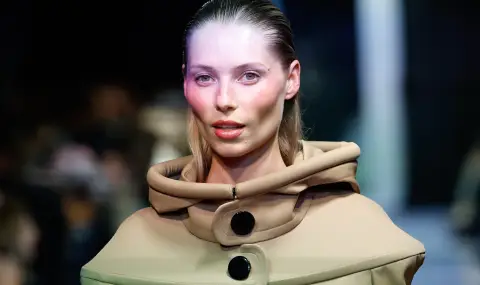Traveling the world, representing the world's most luxurious brands and walking the catwalks in Milan, Paris and New York - the fashion industry promises a glamorous career in the spotlight. Many dream of such a life, but behind the glamorous promises can also be traps, an ARD investigation shows.
"Financial exploitation"
Modeling agencies play an important role in a model's career. They usually organize castings and appearances and make the connection with clients. But some agencies are taking advantage of this position and making a living at the expense of young people's dreams and bodies, ARD journalists found out.
"It is now clear to us that modeling agencies systematically abuse their rights. I mean financial abuse, which is a form of exploitation", says Ekaterina Ozhiganova. She is the founder of the organization ModelLaw, which protects the rights of models. Peyman Amin, who runs a modeling agency and knows the industry well, says that such cases also occur in Germany: "There are agencies that demand money even before the model is ready to earn".
Debts instead of a glamorous career
The path to the dream job can turn into a debt trap, ARD further writes and gives the example of two girls who got burned in this way with one of the largest and most famous modeling agencies in Germany - "Modelwerk" from Hamburg.
New models who join the agency usually complete the so-called "Modelwerk Academy" - a several-day seminar that is advertised as "the perfect quick start in this industry". But everything quickly turned into a nightmare for Zina and Emma (their names have been changed by the editors): the girls found themselves in debt of several thousand euros to "Modelwerk".
According to the agency, they could have paid the amount with work. But this never happened due to the lack of offers. A year later, the two young women were fired, after which they were presented with the bills. Then they were bombarded with reminders and letters from lawyers. Both cases ended up in court. One of the women was found not to have paid, while the other managed to reach an out-of-court settlement.
Zina and Emma say that other models were also asked for money. ARD journalists spoke to industry experts who described the contracts and the procedure as immoral. The head of the "Modelwerk" agency, Claudia Midolo, rejects the accusations: "The contracts can be canceled. That's why I don't see anything immoral here," she told the public media.
"Size zero" seems acceptable again
In order to fulfill their dream of being on the catwalk, many models have to take not only financial but also health risks. As the ARD study shows, a dangerous beauty cult is making a comeback - "Size zero". This trend flourished in the mid-1990s with the discovery of Kate Moss. From that moment on, the so-called "heroin chic" set the standards for the fashion industry.
These standards lasted for a long time until public pressure became too great and the industry promised to improve. For example, fashion concerns Kering (which owns the Saint Laurent brands) and Moët Hennessy - Louis Vuitton (LVMH) published a charter in which they committed to removing the French size 32 from their casting requirements. This size is comparable to clothes that are sold in Germany for twelve-year-old girls, for example, ARD points out.
The authors of the show analyzed the sizes of the models who walked the catwalk for these two brands at this year's Paris Fashion Week and found that six Saint Laurent models and ten Louis Vuitton models wore a size too small. That is. The two fashion houses have violated their voluntary commitment under the charter. When asked by ARD, Kering replied that they comply with the charter, while LVMH did not respond at all.
Health risks
German model Anne-Sophie Monrad says there is a lot of pressure to meet the requirements of the big players. She was a famous top model, walked the catwalk for Givenchy, Gaultier and Karl Lagerfeld and was photographed for Vogue.
The young woman risked her health because of her prestigious commitments: "The biggest risk to my health at the time was related to irregular menstruation. This means that I am not only risking my health at the moment, but there could be long-term consequences". Monrad left the profession because she did not want to comply with unhealthy standards. She has written a book about the inhumane conditions in the fashion industry to warn young women about anorexia, competitive pressure, and exploitation.
Sexual assault and other abuse
Power and financial dependencies are clearly fertile ground for sexual harassment in the fashion industry. Even today, it is still common practice to receive a place in exchange for sexual favors, German top model Caro Scheffler tells ARD. The #metoo debate has also reached the fashion industry and some changes have taken place since then. However, verbal attacks, sexual harassment and other abuses still occur.
Scheffler hopes for a change in the fashion industry, but not just superficial ones: for example, there will be no more agencies that profit at the expense of models, or positions of power that will not be used to exploit girls. "Or someone telling you that you should eat an apple and an ice cube for dinner," Scheffler also points out.
Authors: Kaspar Dudek (ARD) | Karina Parke (ARD) | Julius Bauer (ARD)
